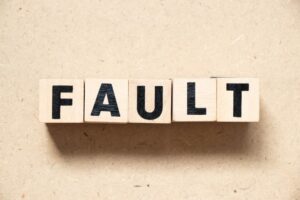In a New Hampshire slip and fall accident, the liable party is typically the property owner or manager who failed to maintain a reasonably safe environment. Liability hinges on proving they were negligent, meaning they knew, or should have known, about a dangerous condition and did nothing to fix it.
The responsibility to prove the owner’s negligence rests on the injured person. This means you have to show that the property owner’s carelessness directly caused your fall and injuries. This is difficult, especially when the owner argues the hazard was obvious or that you were not paying attention.
A successful premises liability claim provides compensation for your medical bills, lost income, and pain and suffering. It is a way to hold a negligent property owner accountable and secure the resources you need to recover.
If you have a question about an injury you sustained on someone else’s property, call us. The team at Coates Law Office is here to help you understand your options. Call us at (603) 262-5766.
Key Takeaways for Slip and Fall Liability in New Hampshire
- Property owners have a duty to keep their premises reasonably safe. This means they must actively look for and fix hazards that could foreseeably cause injury to visitors.
- You may still recover damages even if you were partially at fault. New Hampshire’s modified comparative negligence rule allows you to receive compensation as long as you are not found to be 51% or more responsible for the accident.
- Strict deadlines apply, especially for government property. While the general deadline is three years, you must notify a state agency within 180 days and a municipality within 60 days, making prompt action essential.
The Legal Foundation of Your Claim: What Is Premises Liability?
After a fall, you are left with physical pain, mounting medical bills, and the stress of missing work. You know the fall wasn’t your fault, but you don’t know the legal basis for holding the property owner responsible.
You may hear the property owner’s insurance adjuster use terms like “duty of care” or “negligence,” which are confusing and intimidating. They may try to argue that you bear some responsibility, making you question your own actions and whether you have a case.
The legal concept that governs these situations is called premises liability. It is a legal principle that means property owners have a legal responsibility—a “duty of care”—to keep their premises reasonably safe for visitors. When they fail in that duty and someone gets hurt, they are held liable.
Who Owes You a Duty of Care?
New Hampshire law looks at the reason for your presence on the property to determine the specific duty you were owed. Visitors generally fall into one of three categories:
- Invitees: You are an invitee if you are on the property for the owner’s benefit, like a customer in a store. Owners owe you the highest duty of care. They must actively inspect for and repair dangers.
- Licensees: You are a licensee if you are a social guest, like at a friend’s party. Owners must warn you of known dangers but do not have the same duty to inspect for unknown ones.
- Trespassers: Owners generally do not owe a duty of care to adult trespassers, except to not intentionally harm them. Special exceptions and a higher duty of care apply when children are involved.
How Do You Prove a Property Owner Was Negligent?
Saying a property owner was negligent is one thing but proving it in a legal sense requires clear evidence. Your claim must establish four specific elements to be successful.
1. The Property Owner Owed You a Duty of Care
As mentioned before, this is the fundamental legal obligation to maintain a safe property. For most slip and fall cases at businesses or public places, your status as an invitee automatically establishes that the owner owed you the highest duty of care.
2. The Property Owner Breached That Duty
This is the core of your case. A breach occurs when the owner fails to act as a reasonable property owner would under similar circumstances. Simply put, they did not take appropriate steps to prevent a foreseeable injury.
 Examples of a breach include:
Examples of a breach include:
- Failing to clean up a spill in a grocery aisle in a timely manner.
- Not salting or sanding an icy walkway after a winter storm.
- Leaving loose electrical cords across a hallway.
- Failing to repair a broken handrail on a staircase.
3. The Breach of Duty Directly Caused Your Injuries
You must show a direct link from the hazardous condition to your fall and subsequent injuries. For instance, you slipped because of the puddle of water, not just near it. The insurance company will conduct a thorough investigation, looking for any evidence to argue you were at fault. Our role is to keep them accountable and ensure no amount of blame is unjustly put on you.
4. You Suffered Damages as a Result
This includes all the ways the injury has impacted your life. These “damages” are what compensation is based on and are broken into two categories:
- Economic Damages: These are the tangible financial losses, such as medical bills, lost wages from time off work, and future medical costs.
- Non-Economic Damages: These are the intangible impacts, including pain and suffering, emotional distress, and loss of enjoyment of life.
The Key Question: Did the Owner Know About the Danger?
To prove a breach of duty, we must show the owner had “notice” of the hazard. This happens in two ways:
- Actual Notice: This is when the owner or an employee was directly aware of the danger. For example, another customer had already reported the spill. This is straightforward but less common.
- Constructive Notice: This is more frequent. Constructive notice is a legal principle meaning the dangerous condition existed for so long that a reasonably attentive property owner should have discovered it. A carton of melted ice cream on the floor, for example, suggests the hazard was there for a while, giving the store a reasonable opportunity to find and clean it up.
What if the Fall Was Partially My Fault? Understanding New Hampshire’s 51% Rule
 One of the most common worries people have is, “What if they say I was on my phone, or that I should have seen the hazard?”
One of the most common worries people have is, “What if they say I was on my phone, or that I should have seen the hazard?”
In New Hampshire, this is handled through a legal principle called modified comparative negligence. It works like this: a court will assign a percentage of fault to each party involved based on the evidence.
- The 51% Bar: According to New Hampshire law, you recover damages as long as your share of the fault is not 51% or more. Simply put, if you are found to be less at fault than the property owner (or other defendants combined), you receive compensation.
- How it Affects Your Compensation: Your final award is reduced by your percentage of fault. However, if you are found 51% at fault, you receive nothing.
This rule means you don’t have to be completely blameless to have a valid claim. The goal is a fair outcome that reflects the reality of the situation. You shouldn’t be left with all the bills just because you were momentarily distracted.
However, note that calculating percentages of fault is complex and subjective. Insurance companies try to shift as much blame as possible onto you to reduce their payout. We counter these arguments by presenting evidence to ensure no amount of unfair blame is placed on you.
Does It Matter Where the Fall Happened?
Yes, the location of your fall changes who could be liable and the specific rules that apply.
On Private Commercial Property (e.g., Supermarket, Retail Store, Restaurant)
Liable Party: The business owner or the commercial property manager.
Note: These businesses have a high duty of care to customers (invitees) and are expected to perform regular inspections to keep the premises safe.
On Private Residential Property (e.g., A Friend’s House)
Liable Party: The homeowner.
Note: This feels personally difficult, but remember you are typically making a claim against their homeowner’s insurance policy, not asking them to pay out of pocket. Their duty is to warn guests of known dangers.
At an Apartment Complex (Interior or Exterior Common Areas)
Liable Party: The landlord or property management company.
Note: They are responsible for maintaining common areas like lobbies, parking lots, stairwells, and sidewalks in a reasonably safe condition.
On Government Property (e.g., Post Office, Public Sidewalk, Town Park)
Liable Party: The government entity (federal, state, or municipal).
Note: Claims against the government have very different and much shorter deadlines. For example, the Federal Tort Claims Act (FTCA) has specific notice requirements and a two-year statute of limitations. In New Hampshire, you must provide written notice to a state agency within 180 days and to a municipality within 60 days. These deadlines are strict and missing them bars you from recovery.
Frequently Asked Questions About Slip and Fall Liability
How long do I have to file a slip and fall lawsuit in New Hampshire?
In New Hampshire, the statute of limitations for most personal injury claims, including slip and falls, is three years from the date of the injury. However, as mentioned earlier, if your fall was on government property, the deadlines to provide notice are much shorter.
What if I was working when I fell?
If you fall while on the job, your primary recourse is a workers’ compensation claim. This system provides benefits for medical treatment and lost wages regardless of fault.
However, if a third party (not your employer) was responsible for the hazard, you may have a separate personal injury claim against them in addition to your workers’ comp claim. This might include, for example, if you are a delivery driver and slip on an icy walkway at a business you are delivering to.
The property owner fixed the hazard right after I fell. Does that hurt my case?
No. In fact, it is sometimes used as evidence that a hazard existed. This is known as a “subsequent remedial measure.” While it cannot be used to prove negligence directly, it is relevant for other purposes, like showing the property owner had control over the hazard and that a safer condition was feasible.
Should I give a recorded statement to the property owner’s insurance company?
It is generally not advisable to give a recorded statement without first speaking to a slip and fall accident attorney. The insurer’s goal is to protect their business, and they ask leading questions designed to get you to say something that undermines your claim. We handle all communications with the insurance company on your behalf.
What if I fell on a public sidewalk in Nashua? Who is responsible?
Liability for a public sidewalk is complicated. It depends on the specific municipal ordinance. In some cases, the city or town is responsible for maintenance. In others, the responsibility falls to the adjacent property owner. We investigate the local rules to identify the correct liable party.
Let Us Help You Establish Your Case
At Coates Law Office, we help people across New Hampshire. We understand the challenges you face after a serious fall and are familiar with the local courts and procedures.
The sooner we begin investigating your fall and preserving evidence, the stronger your case will be. If you’re ready to learn more, we are here when you need us.
To discuss your slip and fall case, call Coates Law Office today at (603) 262-5766 for a straightforward conversation about your options.
